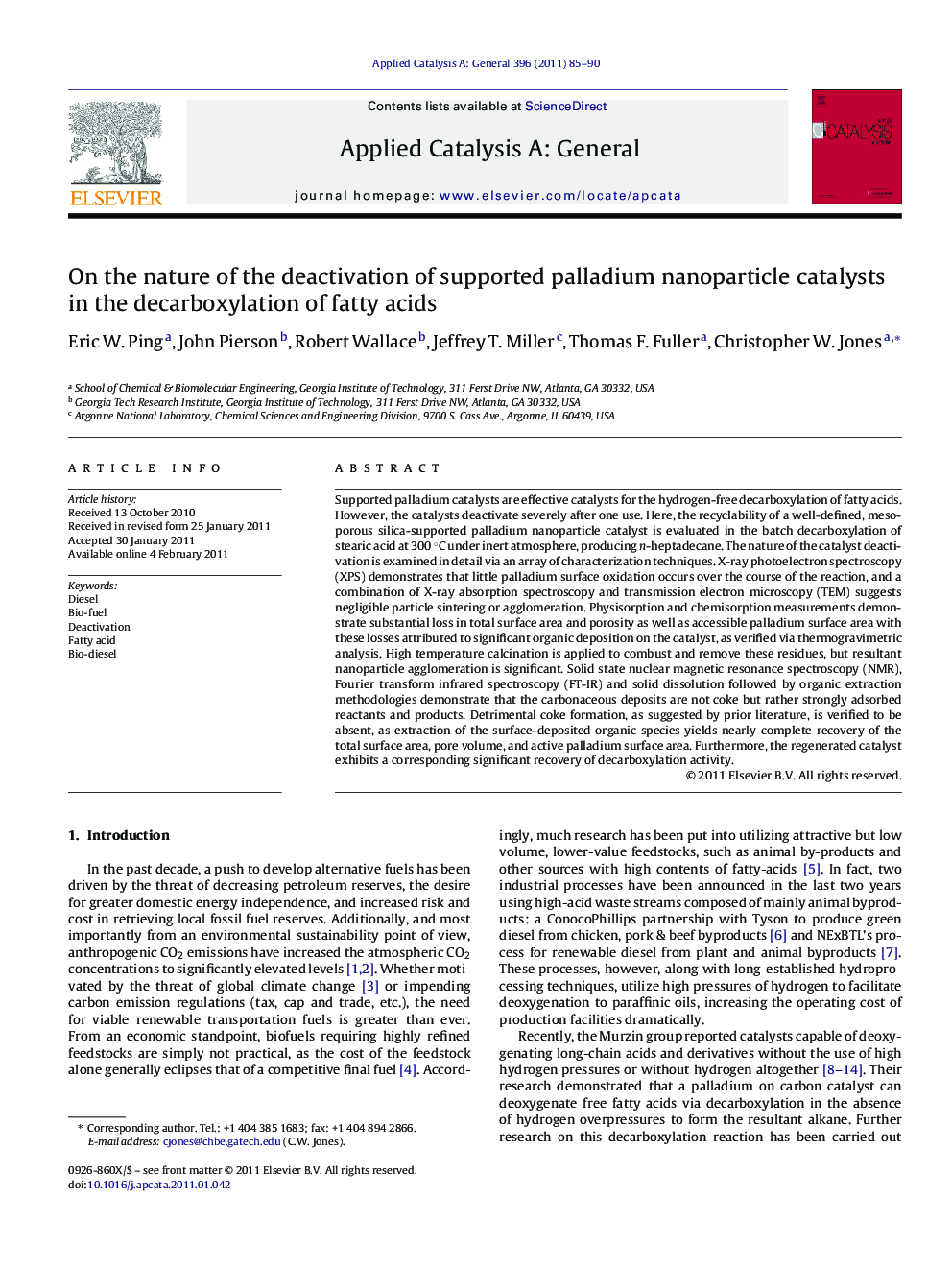| کد مقاله | کد نشریه | سال انتشار | مقاله انگلیسی | نسخه تمام متن |
|---|---|---|---|---|
| 41683 | 45896 | 2011 | 6 صفحه PDF | دانلود رایگان |

Supported palladium catalysts are effective catalysts for the hydrogen-free decarboxylation of fatty acids. However, the catalysts deactivate severely after one use. Here, the recyclability of a well-defined, mesoporous silica-supported palladium nanoparticle catalyst is evaluated in the batch decarboxylation of stearic acid at 300 °C under inert atmosphere, producing n-heptadecane. The nature of the catalyst deactivation is examined in detail via an array of characterization techniques. X-ray photoelectron spectroscopy (XPS) demonstrates that little palladium surface oxidation occurs over the course of the reaction, and a combination of X-ray absorption spectroscopy and transmission electron microscopy (TEM) suggests negligible particle sintering or agglomeration. Physisorption and chemisorption measurements demonstrate substantial loss in total surface area and porosity as well as accessible palladium surface area with these losses attributed to significant organic deposition on the catalyst, as verified via thermogravimetric analysis. High temperature calcination is applied to combust and remove these residues, but resultant nanoparticle agglomeration is significant. Solid state nuclear magnetic resonance spectroscopy (NMR), Fourier transform infrared spectroscopy (FT-IR) and solid dissolution followed by organic extraction methodologies demonstrate that the carbonaceous deposits are not coke but rather strongly adsorbed reactants and products. Detrimental coke formation, as suggested by prior literature, is verified to be absent, as extraction of the surface-deposited organic species yields nearly complete recovery of the total surface area, pore volume, and active palladium surface area. Furthermore, the regenerated catalyst exhibits a corresponding significant recovery of decarboxylation activity.
Figure optionsDownload high-quality image (250 K)Download as PowerPoint slideResearch highlights
► Highly dispersed palladium nanoparticles supported on silica mesoporous foam.
► Severe deactivation after one cycle in decarboxylation of stearic acid to n-C17.
► Deactivation caused by deposition of reactants and products—no measurable coking.
► Catalyst regains substantial activity after extraction of residual organics.
Journal: Applied Catalysis A: General - Volume 396, Issues 1–2, 15 April 2011, Pages 85–90